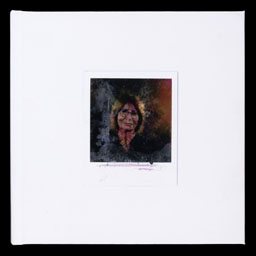Charlotte Laundy
Kincoppal - Rose Bay School of the Sacred Heart
NANAMA
Photomedia
Expired Polaroid film, Adobe Photoshop
My body of work, Nanama, represents the devastating consequences of my grandmother's experiences with Alzheimer's on her as an individual and on our family. Through various forms of analogue and digital manipulation, I worked with old family photographs, letters, expired Polaroid film, acetate transparencies, Adobe Photoshop and a photocopier machine to manipulate, distort, fragment and blur my imagery. Historically, photography holds a powerful role in capturing memories and preserving moments in time. The role of photography goes far beyond mere documentation; it becomes a means of storytelling and an instrument for reliving emotions and experiences.
My artmaking practice has been influenced by the study and interpretation of the following artists: Luz Perez Ojeda; Roy Lichtenstein; Paula Dawson; William Utermohlen; past ARTEXPRESS exhibitors: Christopher Banks, This is not as black and white as it seems [2013]; Joshua Lee, Bound by Perception [2015]; George Daud, After Mapplethorpe, O'Keefe, Weston, Maguire [2013];
Marker's Commentary
Nanama is a poignant exploration of the profound impact of Alzheimer's disease on both individuals and their families. The series comprise of six large evocative images that blend familial scenes and text with textual elements, inviting the audience into its narrative grasp. Employing Polaroid film evokes a potent sense of nostalgia, symbolising the gradual confusion and erosion of memories and the haunting voids left behind. The deliberate creation and use of abstracted, out-of-focus imagery serves as a touching reminder of the inevitable blurring and fading of memories.
The accompanying book offers a more intimate engagement, delving deeper into the family's history through scanned and manipulated snapshots. These images, veiled by a manipulated obscurity, often reveal mere glimpses or are shrouded in darkness, echoing the challenge of accessing fragmented memories.
The sophisticated manipulation techniques of the dyes in the photo emulsion employed throughout underscore this Body of Work’s conceptual depth, maintaining a consistent thematic resonance across its visual narrative. In a departure from photography's traditional role of memory preservation, the deliberate choice of potentially outdated and distressed analogue film deliberately reveals imperfections, thereby enhancing the series' conceptual sophistication.

